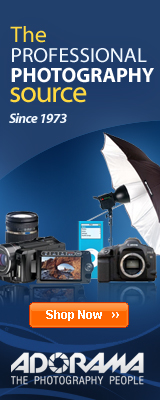101
-
Become A Better Photographer
To become a better photographer you need to know your gear. The number one step to become the best is to read your camera manual. That right READ THE MANUAL!!! That little book have so much information that will make the different between a good photographer and a bad one. If you want to be [...]
-
Don’t be Afraid to Use Different Framing
Don’t be afraid to try different and unusual framing in your photos. Cropping in unusual places, sometime can produce a very pleasant and artistic feel or just save a crappy picture with poor composition. Don’t be afraid of cropping, some people think that cropping its bad and make you a lazy photographer but it give [...]
-
The new 80”x76” softbox and 10,000 Watt strobe
Have you come across a situation where you are portraying someone and the sun is so harsh? You love that background, the model is doing an excellent job but when you see the screen of your camera, you realize how horrible it out the shadows and highlight are, the contrast are too strong. Luckily we have equipment available to deal with that situation. This photo was taken at Fort San Cristobal in Old San Juan, PR at 11:45 am. For those who are from Puerto Rico know how strong the sun is at that time. To counteract the effects of the sun and to do that you only need to use the best of the best in equipment. A softbox 80”x 76”in a 10,000 watt strobe, camera right and above. Thinking that this [...]
-
Waiting for the right moment
Sometimes in photography you need to have a bit of patience and wait for that perfect moment. Wait for that one opportunity that satisfy to make that single photo, the perfect shot you see on your head. For this post I wanted to use my new niece Alannys. As my first niece I’m making an [...]
-
Photography 101: Polarizing filter
If you are just starting out in photography, I highly recommend you get a polarizing filter. This filter comes in two forms: the circular and linear. I recommend the circular because it is easier to use and carry. This filter reduces glare and increases to taste, because you can adjust this type of filter. In this case, I used the filter to cut some reflections in the water so that the rocks barely looks beneath the sea. However you can do the opposite and make the water reflects the sky and clouds. Here I made a small diagram to show the best moment where more reflections can be achieved and that is when your light source is 90 degrees from your subject. Sorry I’m not that skilled at drawing and [...]
-
Understanding histogram
Almost all the camera today have the histogram. The histogram is a graph that shows you the brightness of an image. The left side of the histogram show how many “dark” pixels you have captured and the right side, how many “bright” pixels you have captured. The region where most of the brightness values are [...]
-
Long exposure photos
Long exposure photos, using a long duration shutter speed to capture the stationary elements of images while blurring or obscuring its moving elements. Long exposures photos are easiest to accomplish in low light conditions, but can be done in brighter light using a Neutral Density Filter. Long exposure photography is often used in the night in order [...]


